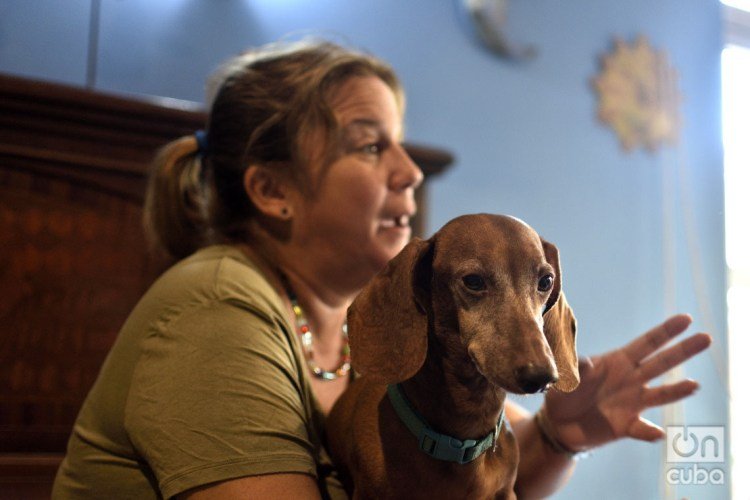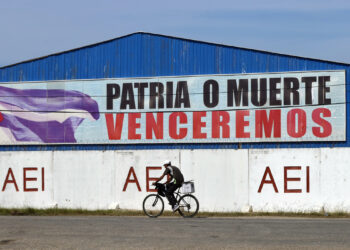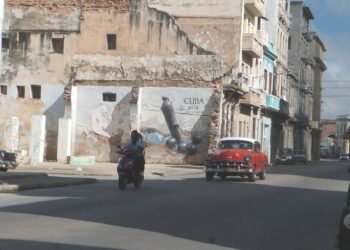Violeta has been dreaming of dogs and cats for months, she posts on Facebook about abandoned animals and does not stop fighting in Zoonosis to save those who wait there for their last hour. Yoanne, although she already was a civil engineer, decided to study Veterinary Medicine to help all the animals she could and created a dog shelter on a farm outside Sancti Spíritus.
Camila and Paola have hidden their cats for years so that their landlords don’t discover them and have had to accommodate their schedules and even their professions to their activity as animal advocate. Sahily, who has not stopped collecting animals throughout her life, has been infected more than once by some of those she had rescued and has had, like them, to comply with the quarantine.
These are just a few examples of the personal costs that Cuban animal advocates assume daily. To this must also be added the impact on their families and personal relationships, the perception that many have of them in their communities―“that you’re told that you are the crazy cat lady,” says Paola smiling, although very seriously―, and the suspicions with which they are seen by the authorities, which presume there’s a political purpose to their activities.
And yet, if a group of Cuban civil society gained visibility in 2019, it was them.
Cuban animal lovers, structured mostly on the margins of the government―in organizations such as CEDA, PAC and also independently―amplified their actions in the streets and on social networks, clamoring for an animal protection law awaited for years.
Besides their usual activities of gathering abandoned animals and their campaigns for sterilization and adoption, last year the animal advocates organized two unprecedented events on the island: a demonstration against animal abuse, held in April in Havana with governmental approval, and in which hundreds of people marched with their pets; and a peaceful protest in November against the state agency known as Zoonosis, also in the Cuban capital, which captured and slaughtered animals that were found in the streets.
This latest effort, carried out “in silence” by a group of activists, was meant to raise animal consciousness in Cuba, and it led to the authorities―particularly officials of state entities like the Ministries of Agriculture and Public Health―sitting at the table with independent animal protectors to listen to their complaints and requests, and begin to identify solutions to longstanding problems on the island.
In this way, the animal advocates managed to put a stop to the massive round-ups of dogs and cats in Havana through violent means—although these continue to take place outside the capital—as well as the sacrifices practiced by Zoonosis using strychnine, a substance prohibited in many parts of the world that causes animals sacrificed in that method to suffer. They also managed to rescue animals that had been confined there and “as an experiment,” they began to manage their operation, respond to reports received, and to tend to sick animals and temporarily relocate them in homes or in a previously structured network of private and voluntary shelters.
And, perhaps as a side effect, the issue of an animal protection law returned to the media and public opinion, after it gained strength during public debates on the draft of the new Cuban Constitution.
Several weeks have passed since then and, in spite of many difficulties and delays, the protectors are reluctant to return to the inertia prior to the protest in Zoonosis and the subsequent meetings―the main group that have dialogued with government representatives is made up of around ten of them, but it has other connections within the Cuban animal protectionist movement―although this means less time and more misunderstanding for them. Because, at the same time, their commitment has also been strengthened.
“This task knows no schedules,” says Sahily María Naranjo, a professional restaurateur who has been a defender of animals since childhood and who has participated in the recent meetings with state representatives, said to OnCuba.
“It demands all your time, all your efforts, it affects your personal relationships and also has health implications, because many of the animals we collect are sick and you can catch their illness, as I did, even though we are careful and we treat them quickly. But it’s not their fault, they’re victims. We take on the risk because someone has to help them, because we want to, and because if we didn’t it would be even worse.”
“Being an animal advocate in Cuba requires a lot of sacrifices and causes a lot of pain because of the conditions in which we find many of the animals on the streets,” says actress and activist Violeta Rodríguez. “It forces you to overcome problems and the prejudices that typically exist against us, because there are people who think we’re go crazy collecting dogs and cats, and protesting about something they don’t consider important. Fortunately, it’s not everyone, and social perception on the subject has been changing, although much remains to be done.”
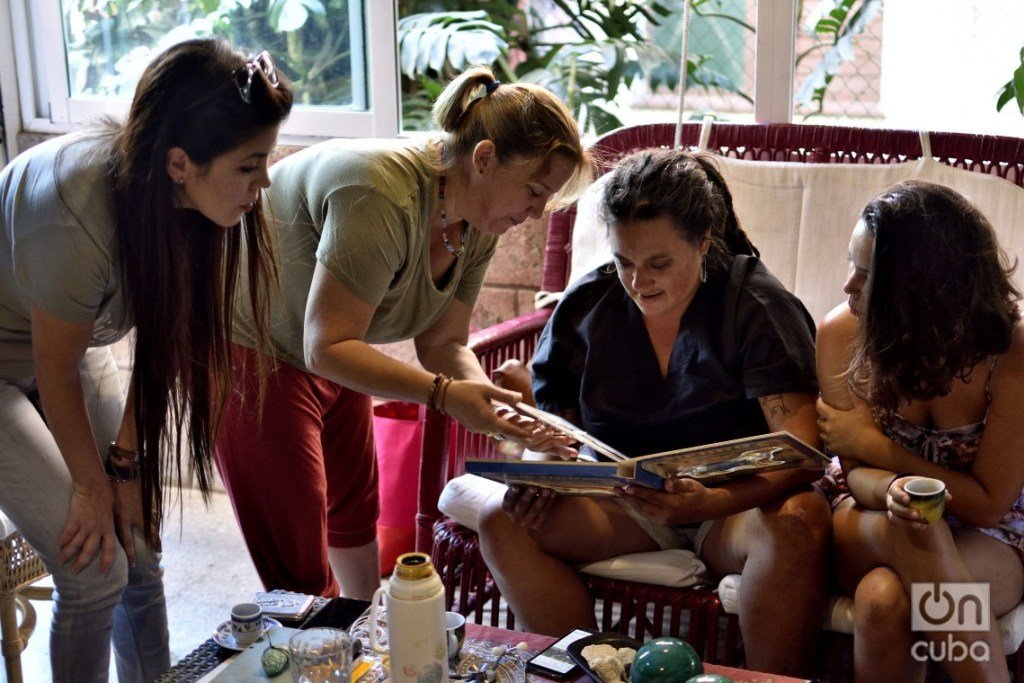
Society, the government
“I’m worried about the atrocities that some people in Cuba commit with animals. I think that someone who is capable of mistreating, torturing or killing an animal, such as the dog they set on fire in Manzanillo or the one they dragged with chains in Guanabacoa, could also do the same to a person,” says Yoanne Lisbet Valdés, who, although she lives in the central province of Sancti Spíritus, periodically travels to Havana to participate in meetings and activities with other activists. “But I’m even more concerned that these people act with impunity, that nothing happens to them. It seems serious to me because it reflects a terrible indolence in society.”
“You find all sorts of people,” says Paola Cabrera, a journalist by profession and today a self-employed worker. “We find from people who make fun of us and laugh in our face after having mistreated an animal, to people who are sensitized to what we do, who approach us and offer us help. I perceive there are more and more people who understand what we do and show solidarity, those who donate something and end up adopting. Many of us protectors begin this way, because of friends, acquaintances, because this work is like an expansive wave that influences our environment, and if they let us work in communities and schools, what couldn’t be achieved?”
This expansive wave, multiplied by the systematic work of the protectors and their increasing presence in the networks, has contributed to the growth, both in Havana and in other provinces, of the Cuban animal advocate community, in which women are indisputable protagonists, “perhaps because of our sensitivity, because of our emotional character, but also because of the leadership and social strength that Cuban women have been gaining,” reflects Paola.
“Our cause is very noble,” Violeta explains. “Most people, beyond their affiliations, their ideology, their social status, like animals and I think that has helped us gain support and visibility. But that doesn’t mean that we don’t have detractors―even among some who fight for other causes that also seek recognition in the country and that have come to minimize us and say that in Cuba more attention is paid to those who defend animals than to people―or that everyone has the same sensitivity to an abandoned animal, or to things that are considered normal such as religious sacrifices, or cockfights, or the confinement of animals in zoos. It’s complicated and that’s why this is a task that has to go step by step. “
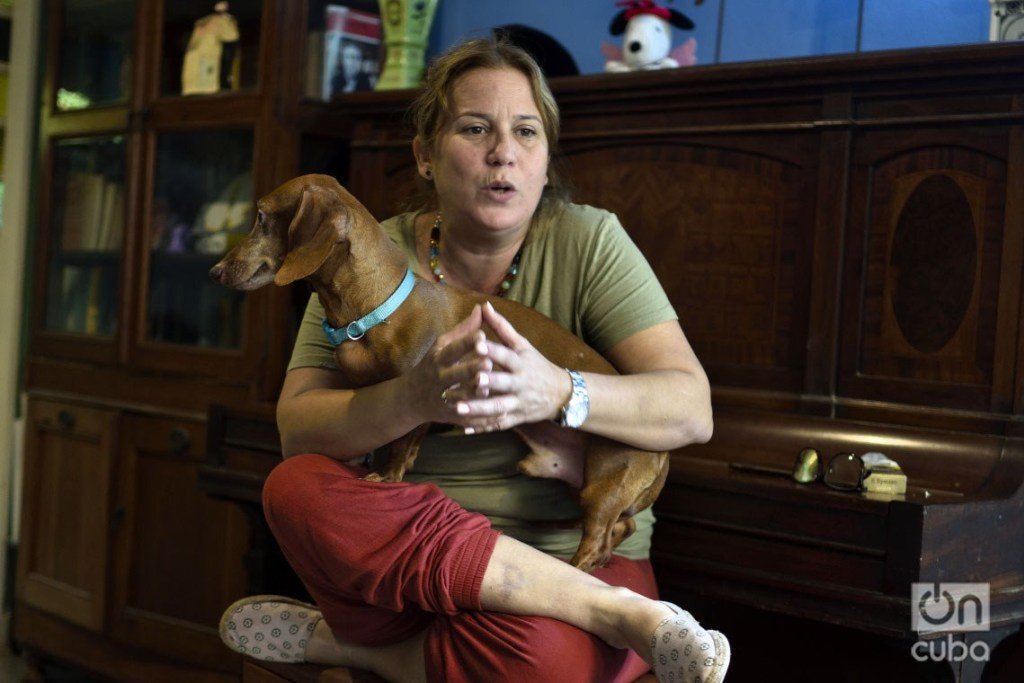
In this step-by-step task, the government is a fundamental actor. Education, the official media, Internet access―the increase in connectivity on the island, according to several protectors, has been key to articulate their movement―, the institutions in charge of animals are in their hands. However, independent protectors don’t believe that for that reason they can’t participate and, much less, be seen as enemies.
“The Cuban authorities have to trust us, understand that our interest is to save the animals. That we need ways and conditions to do our work, to channel donations, to receive medicines and resources that are very difficult to obtain in Cuba, and that does not mean that we are financed from abroad with a political intention. They should know that we have nothing to hide and that what is in favor of animals is not against the government,” says Violeta.
“In addition, there should be coherence between what they tell us and what they do in other spaces,” adds Camila, philologist, Paola’s sister and also an independent worker.
“I think they do intend to listen to us, to dialogue, that today they are much more aware of the situation and understand that changes must be made in the way things have been done in Zoonosis and in terms of animal protection in general, but then in the media they try to validate or justify what they do, or deny things they do know happen, such as the violent methods used in the collections and sacrifices, because they have recognized it in the meetings, and that It is contradictory.”
“With what we have done after the protest in Zoonosis and the meetings with them (the state representatives), I think we have shown that it is not impossible to work for animal protection in Cuba, that it can be done and they can give us participation in that task,” says Yoanne. “It isn’t about giving everything to us or that things are done as we say; that isn’t what we are asking for, but that they let us collaborate, that they allow us to help them organize this work and, even, to do things that for one reason or another are not always done in the best way, such as vaccinations, sterilizations, the control of dog and cat populations. I myself have witnessed batches of spoiled vaccines in my province because of problems with trained personnel, or the way they are stored, and that shouldn’t happen, because they are expensive and necessary, and because in the end what was planned isn’t met, or they say it was done well and it wasn’t, and nothing happens. “
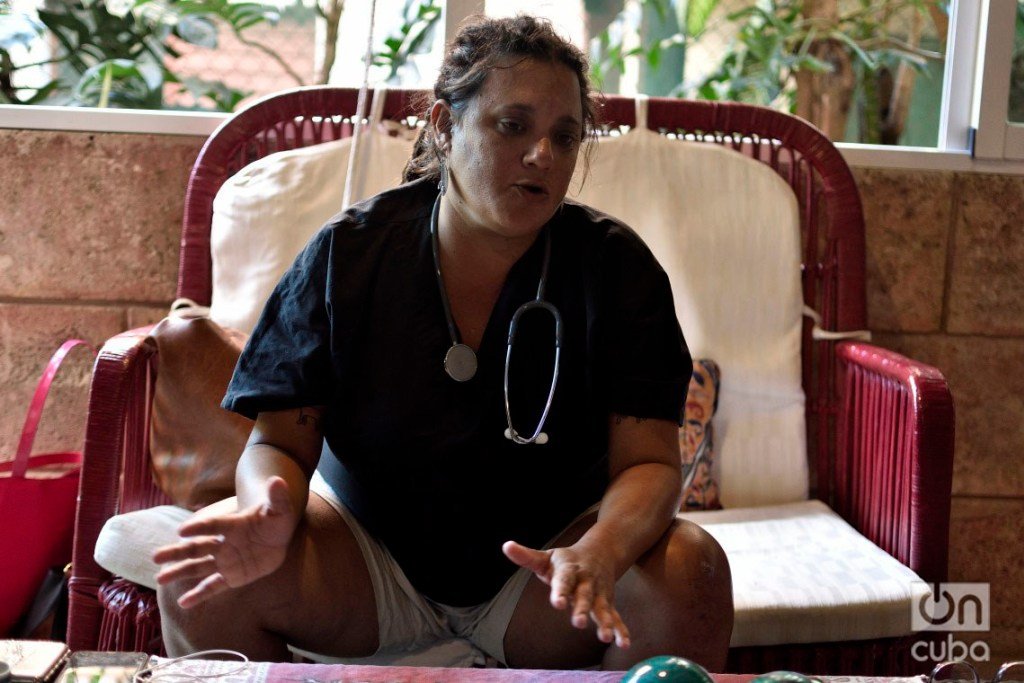
For this protector, who dreams of carrying out a zootherapy project with autistic children and senior citizens, in Cuba “it’s more dangerous to defend an animal than to kill it,” because of the prejudices and suspicions that her work awakens both among the authorities and part of the population. “We need that vision to change,” she says, “that obstacles and suspicions be eliminated, because we can’t advance that way, and those who suffer most in the end are the animals.”
As an alternative to achieve greater legitimacy and “peace of mind,” some independent protectors value the possibility of entering the Cuban Association for the Protection of Animals and Plants (Aniplant), the only organization of its kind recognized by the government, which many activists consider “very indulgent” and of little social impact, and which, in turn, for many years―it exists since 1987―“it has been virtually impossible to enter, I guess because many protectors are seen as undisciplined, troublemakers, moaners” , says Sahily.
“However, the intention is not to enter Aniplant just to have official support,” Camila says. “We would like to help think and do from within the organization, to dialogue with the state institutions, because we have many ideas and intentions that we think could be done in Cuba. But in the end, we also don’t want to be there just to be there, or be part of something that doesn’t meet our goals. If so, it isn’t worth it. Being part or not of Aniplant, or of another organization, or continuing independently, will not stop our work in favor of animals, which is the most important thing. “

Will it be a law?
After years of constant demands and actions by Cuban protectors, 2020 must finally mark the approval of a legal text on the subject on the island. According to the legislative schedule approved last December by the National Assembly, next November a decree-law will be presented and presumably approved in which a government commission has been working and whose wording was confirmed, symptomatically, shortly after the Zoonosis protest.
It will not be a law, as many activists had sought, but beyond that, the protectors are concerned that the draft has not been made available to the activists, although in the meetings held they have been assured that their opinions and suggestions will be taken into account.
“We want to believe that it will be so,” says Yoanne Lisbet, “but we’re interested in having a more active role, which involves us in its conception. Who better than us, who suffer and work every day for the protection of animals, to know what’s needed and advise on what should be the focus of that legislation.”
“We are a little blind because we don’t really know at what stage the draft is, what things we have said are going to be taken into account and which are not, and what approach will prevail, if that of welfare, as the authorities have been pursuing, or the one of protection, that seems to us more precise,” Paola comments. “But, beyond the terms, what interests us is that it is a text that really protects the animals, that recognizes their rights and strongly punishes those who mistreat them, and that it also has a broad vision, a social value, that not only punishes offenders, but also promotes the protection of animals among children, in schools, in communities, as part of caring for the environment. “
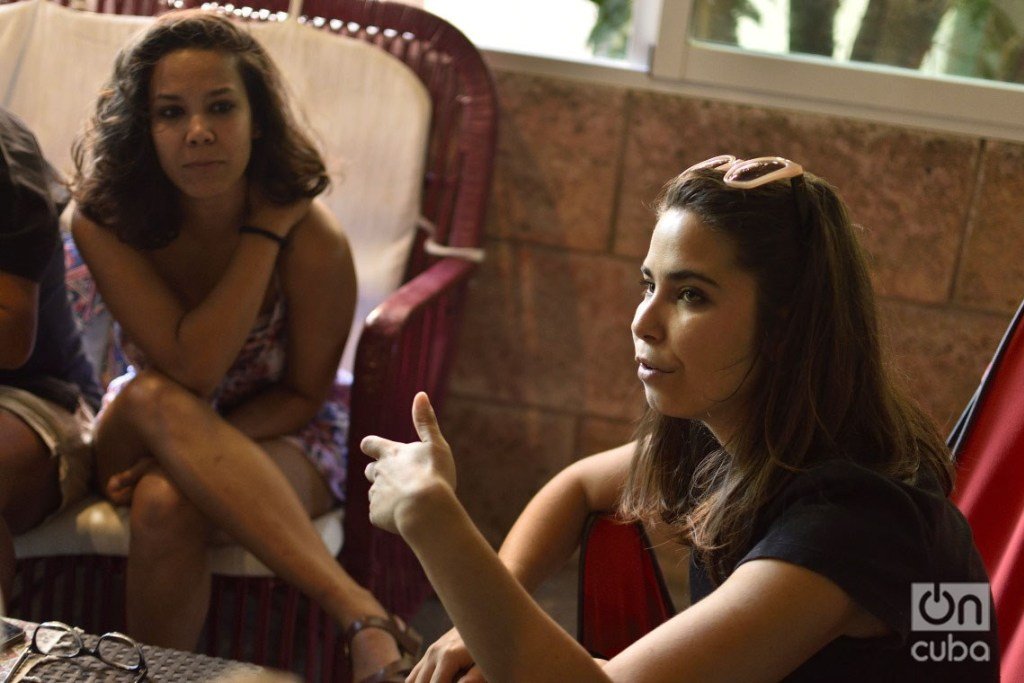
Sahily, meanwhile, insists on the educational and communication components that systematically bring the issue into schools and to mass media as a recipe against the still existing indolence, that it be the subject of campaigns and it be systematically addressed in the press. “In the official one, not only in the alternative, which is the one that has so far given more attention to this issue,” “not as an indirect response to our protests, but as something important and necessary, which has been gaining strength around the world and in which Cuba should not be left behind. “
In addition, in her opinion, the decree-law must include the creation of a pet registry, which commits people to protect the animals in their care. Also, to guide the obligations of the State regarding draught animals and street animals and prohibit the use of cruel methods of capture and slaughter, and, finally, prioritize the criminal aspect.
“The consequences for those who mistreat animals need to be clear—what sanctions will be applied, which depending on the seriousness of the cases should not be limited to fines, but also greater penalties and even imprisonment,” she points out.
Violeta, on the other hand, is concerned about the scope and holistic nature of the law: “There shouldn’t continue to be gaps, setting aside issues about which there’s not the same social perception but which are no less important, such as dog and cock fights, the mistreatment of draught animals, sacrifices for religious rituals, zoos, animal breeding, and game preserves. All that and more should be regulated, not to outlaw it just for the sake of it, but to ensure the best possible conditions for animals.”
But even when the decree-law is finally passed, animal advocates know that their work will not be over. Just the opposite.
“With or without the law, we can’t stop, because it would be incoherent. It would go against everything we’ve done and against ourselves, against what we defend. When you see how the animals were before and how they are later when they are rescued and protected, how they change, how they appreciate it, how they reciprocate all that love and attention, you become aware of the good you’ve done, and the difference lies in just a little love, a bit of food, a bit of willpower. Just with that a great deal of good can be done, and a law, although it’s very important, is not enough to achieve this,” Paola affirms.
“The law cannot exist in order to assuage animal activists, but rather to actually protect the animals. And we will have to make an effort for it to be applied as it should, to comply with what is legislated, and to take into account what is not legislated but which we believe should have been included,” says Violeta. For her, the differences that can exist with the authorities or within the animal protection movement don’t matter, “because we are human beings,” or gaining more recognition than others, but “to work together, to build consensus, and focus on protecting the animals, which in the end is out objective.”
“In our cause we fight for the voiceless. If we left the animals alone, they would have no one to speak for them, to defend them. We are their voice and therefore we won’t stop,” she concludes.

